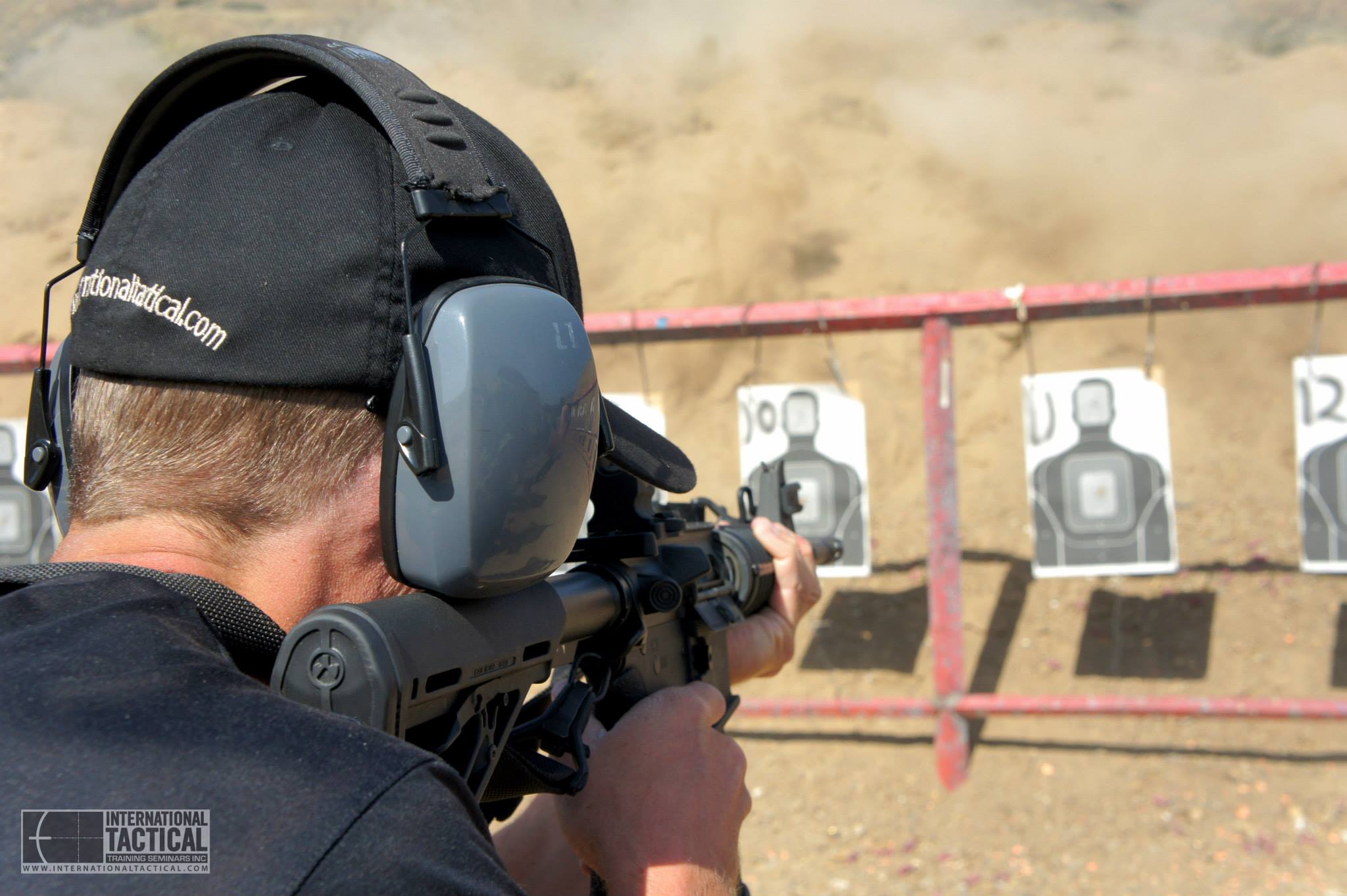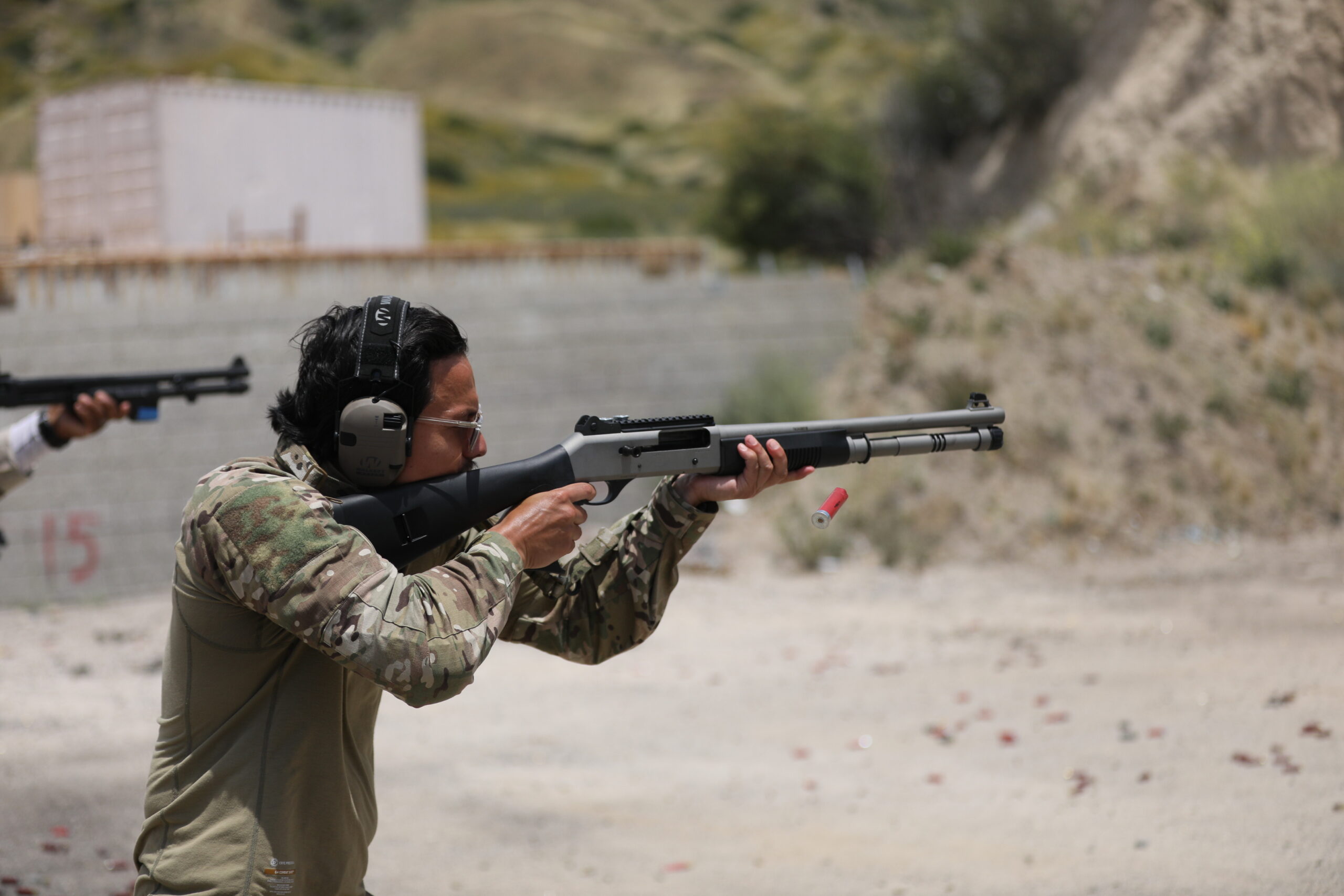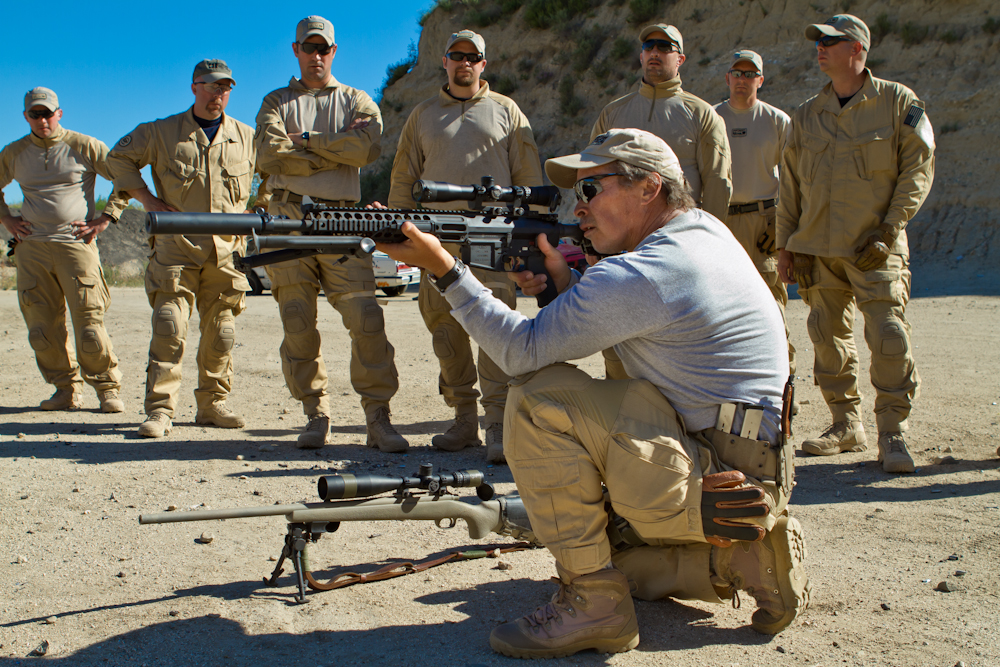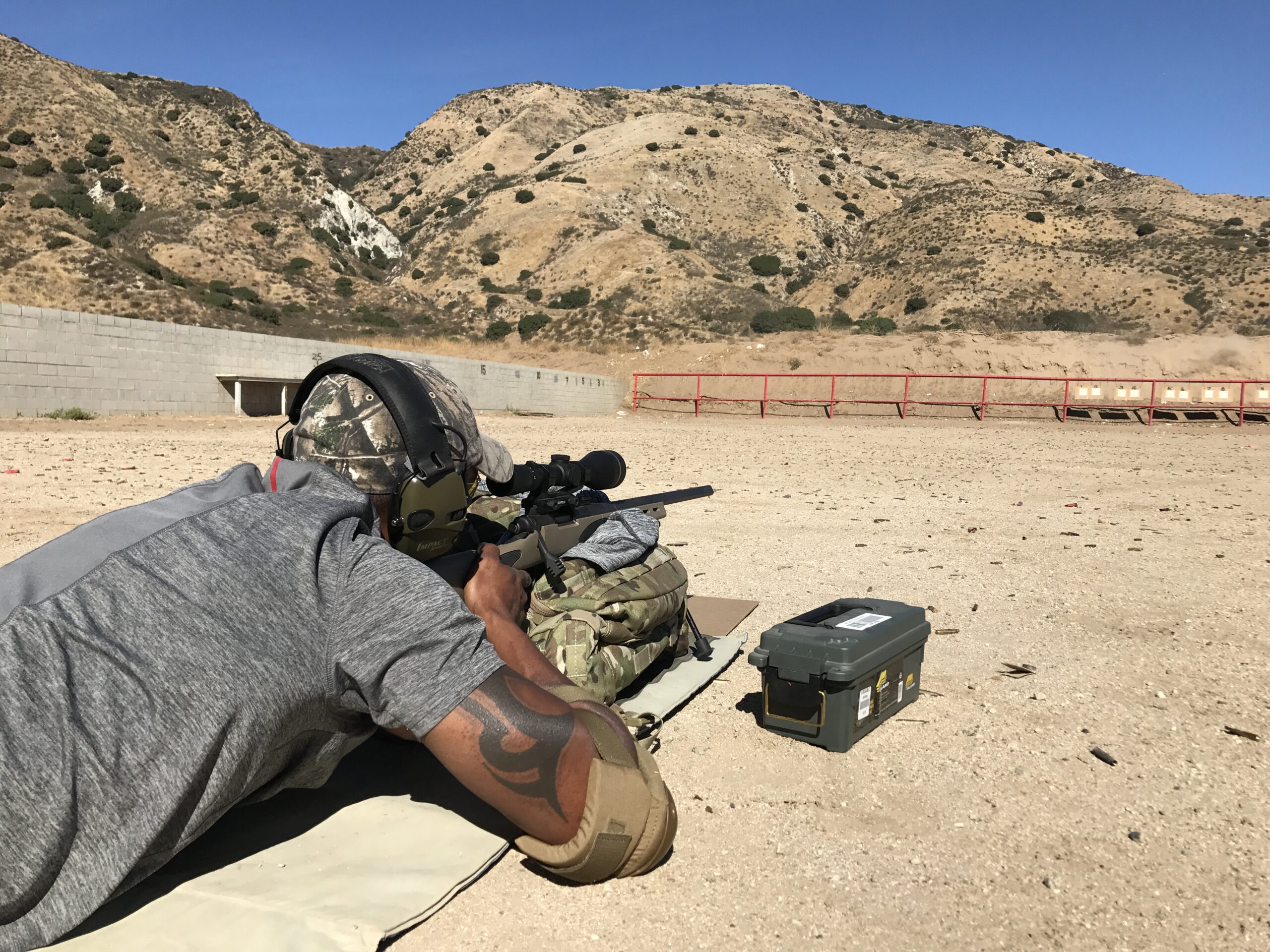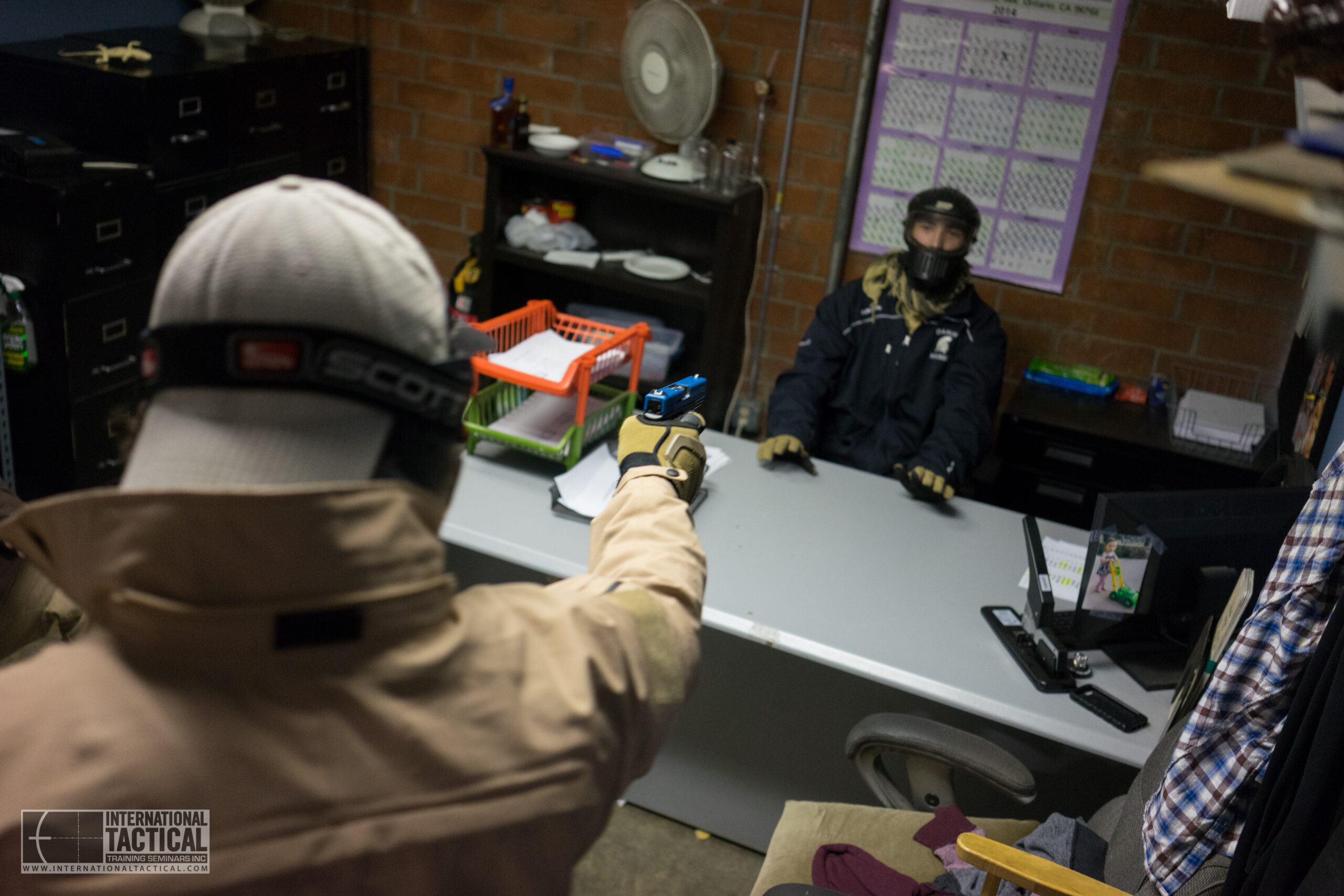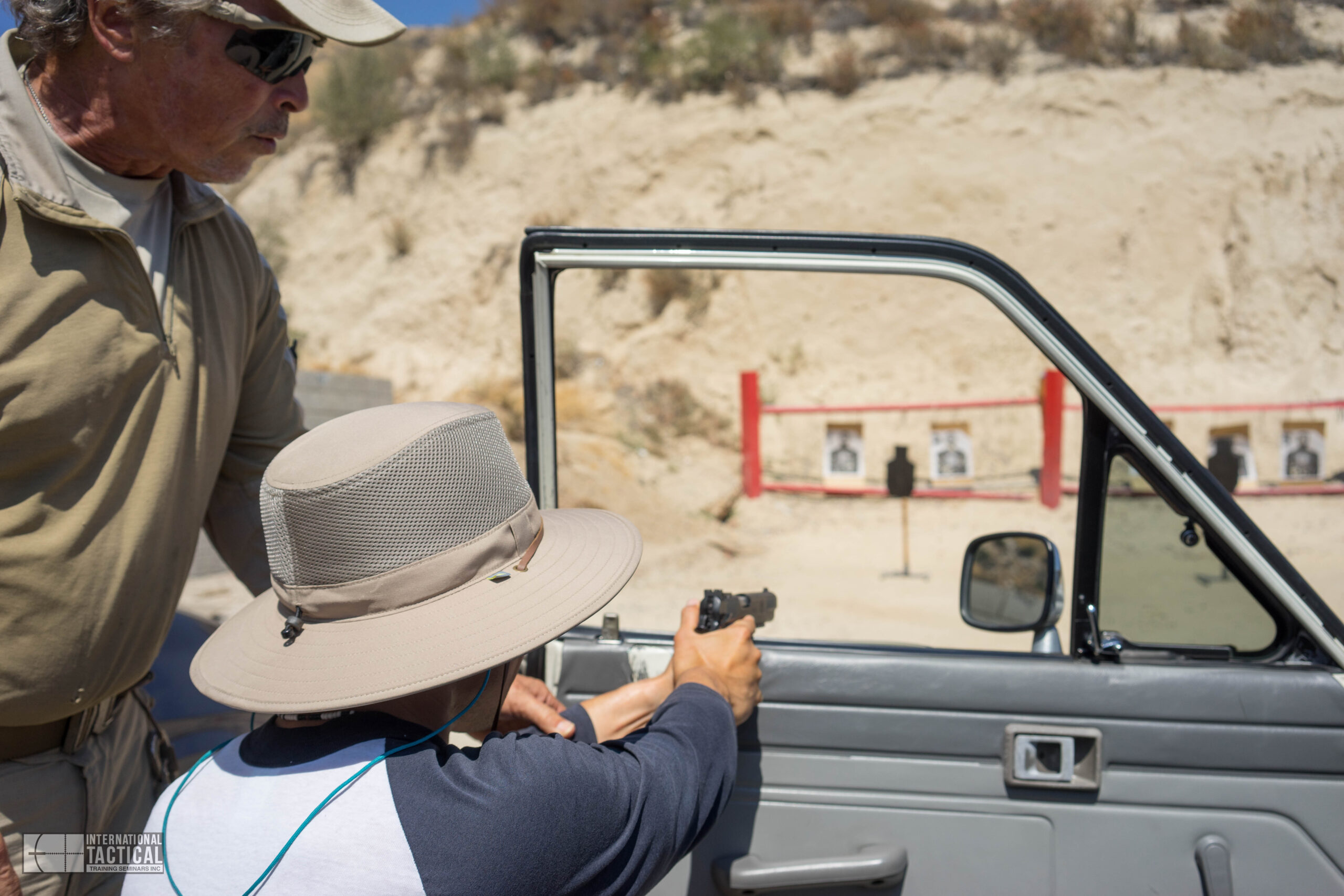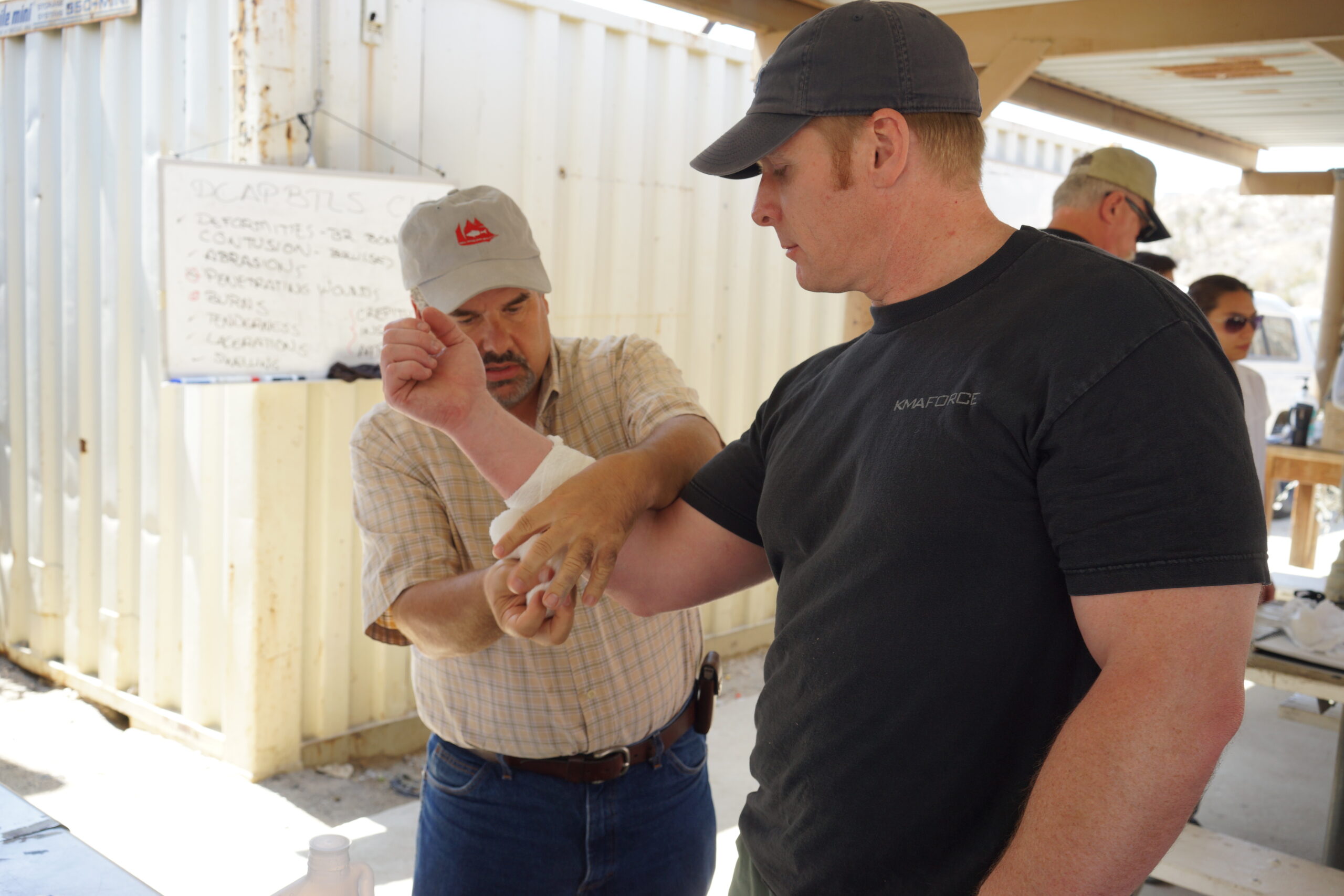Sniper 1
Class Overview
Sniper I is designed for new precision rifle shooters and for those who have not had any formal training. We cover all the basics of the Sniper rifle including the use of optics, ranging, estimation of wind and distance and equipment selection.
Subjects
- Introduction to Sniper rifle
- Rifle set up
- Selection/care and cleaning of rifle and optics
- Basic tenets of the precision rifle
- Ballistics – Internal/external
- Use of elevation/windage/parallax turrets
- Intro to ballistic apps
- Zeroing at 100 yards
- Ranging from the reticle
- Mil dot or MOA scope
- Establishment of come ups and come downs to 1,000 yards
- ITTS speed dialing
- Calculation of holds
- Shooter/spotter coordination dialogue





Equipment
- Rifle of .223 or greater caliber with a sling*
- Bipod (optional, but recommended).
- Optics – Make sure you have quality, reliable optics that are properly mounted to your rifle prior to attending the class.
- Scope manual and any tools needed for adjustment of scope and any tools for the mounting of scope rings.
- Notebook and pencils for rifle data and class notes.
- Locate the following info and write it down in your notebook BEFORE arriving at class:
- Barrel twist rate (You can find it stamped somewhere on your barrel and it will be written as 1/10 or 1:10 for a 1 in 10 twist rate for example). Otherwise just Google it specific to your rifle)
- Ammo brand and details (all of the following ammo details can be found on the ammo box or manufacturer’s website, it’s common info):
- Muzzle velocity
- Caliber (308, 6.5 Creekmore, 300WM etc)
- Bullet weight (168g, 147 eld, 250g etc)
- BC (Ballistic coefficient)
- Download and log into these 2 apps to your phone BEFORE arriving at class: Hornady 4DOF Ballistic Calculator and Ballistic Arc
- Big enough rucksack (backpack) to use as a rifle rest… (Please make sure to bring a bunch of old clothing to stuff in your pack as you will be using it as a platform to shoot from).
- Tube socks or long socks and big bag of uncooked white rice or a large container of airsoft BB’s. Enough rice to fill 2 large socks. Don’t fill the socks.
- Shooting mat (we will provide if you don’t have one)
- Knee and elbow pads (optional)
- Binoculars (optional)
- Spotting scope (optional)
- Rifle tripod with mount (optional)
- Cleaning kit (optional)
- 100 rounds of ammunition (we recommend that 20-40 rounds of this is “match grade” ammunition, but if you can’t find that much match grade then you can use standard ball ammo and you will still be able to fully participate in class.)
*For sniper rifle rentals please email us at admin@internationaltactical.com to confirm they are available as we have a limited supply
Class Details
Class Tuition:
From: $550.00
Prerequisites:
If you have not completed the prerequisite class with ITTS, but you have prior formal training that was recent and comprable in both subject matter and duration, contact us to discuss your candidacy for this class. Your prior training will need to have been from a qualified and verifiable source that meets our school’s standards.
LEO & Military may be exempt from this prerequisite. Contact us to discuss.
Day & Times:
This is a 2-day class:
Sat 9:00 AM – 4:00 PM
Sun 9:00 AM – 4:00 PM
Location:
12651 Little Tujunga Canyon Rd, Sylmar, CA 91342
Frequently Asked Questions
Can I rent a rifle for my training?
Absolutely! We have firearms available to rent for all our classes. When you rent a rifle from us you will receive a full rental package which will include: the firearm, all necessary associated equipment (ear and eye protection, a sling, etc.) as well as ammunition for your training.
Which sniper class should I start with?
If you have never taken a formal sniper class with a qualified and verifiable school then you should start with Sniper I (link to Sniper I class page). Even if you have some previous sniper training, but it has been a while, there’s value in taking our Sniper I class to refresh your skills. It never hurst to practice the basics!
If you have previous formal sniper training it is possible to start in Sniper II, but please be prepared to show us proof of completion of those classes from qualified schools. We insist on this not to be hard on anyone, but to make sure every student is placed in an appropriate class based on their skill level for the sake of both safety and so they get the most out of the training.
If you are military or active law enforcement with prior precision rifle training then you may automatically start in Sniper II. However, there still may be value in beginning with Sniper I to brush up on fundamentals.
Contact us with any class placement questions.
What rifles and optics are best for ITTS Sniper classes and how should they be set up
A varierty of calibers are appropriate for our classes, but the most common are .308 and 6.5 Creedmoor. We also have students use .300 Win Mag and .338 Lapua. So in terms of training, any of these calibers will work and be effective at long distance, However, if you are purchasing a new rifle we encourage you to do some research and choose a caliber that is well suited for your intended use with the rifle beyond our classes if you have any. There are many considerations that go into caliber choice, such as whether you will be hunting, competing or even just for shooting to certain distances.
In terms of rifle choice, both bolt action or semi-auto are both suitable. It is very much personal preference. Many purist long distance shooters tend to prefer bolt-action.
Barrel length can vary quite a bit, most often they fall in the 20-26″ range with 24″ often being the sweet spot for a bolt action rifle in .308 and 6.5 Creedmoor.
Optics choice is an important decision, and like caliber choice, is very dependent on what you plan on doing with the rifle. Whether you are taking classes like ours, hunting, or competing in shooting matches, these will inform what power your scope’s magnification should be. For a 1,000 yard rifle, the most common magnification range tends to be about 5-25x.
Another decision you will need to make is MOA or MIL turrets and reticle. We highly recommend matching the reticle to the turrets, meaning if you have. MIL turrets then go with a MIL reticle. In general, both MOA and MIL are both totally fine and the principles you will learn will apply to both. Some who are just starting out tend to find using MIL to be a bit easier, but there are still lots of people who use and prefer MOA, especially hunters.
Lastly, make sure to have your optic professionally installed, that is critical. Bring any scope manuals and tools with you to class in case you need to make any adjustments on the fly.
What distances will I be able to shoot to in ITTS Sniper classes?
We can shoot out to a maximum distance of 1,200 yards at our range.
Can I buy ammunition from ITTS for training?
We don’t sell ammunition to those who are bringing their own firearm to class, they will need to supply their own. If you need help figuring out where to purchase ammunition, check out our Industry Partners!
We only provide ammunition to students who are renting firearms from us for the sole purpose of training.
Booking
1) Select a student quantity
2) Choose a date
3) Enter number of rentals
4) Click “ADD BOOKING”
NOTE: Before booking this class, please make sure to view our policies for Age Limits, Refunds and Rescheduling, as well as our other Policies, which will be strictly adhered to.
No need to pay now for the rental! Simply indicate how many rentals are needed and pay for the rental on the day of your class.
All rentals come with ammo and all other associated equipment. We will have everything ready for you at your class.
